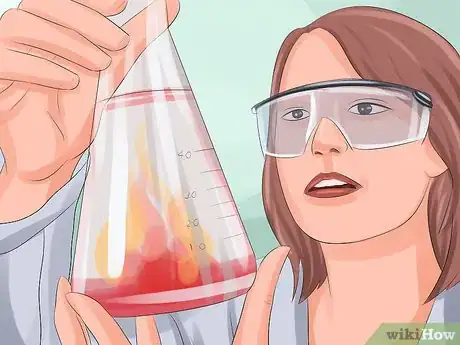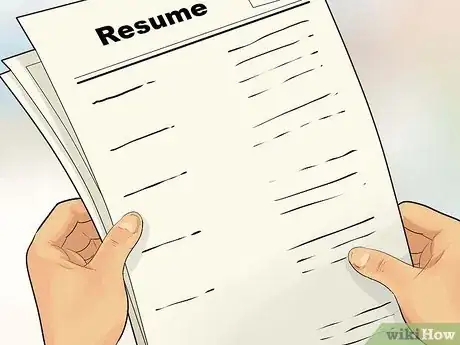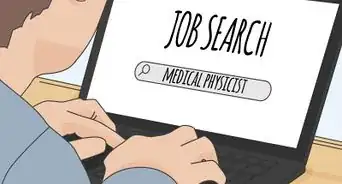This article was co-authored by Shayne Guffey, DMD. Dr. Shayne Guffey, DMD is a Dentist and the owner of Mountain View Family Dental in Mesa, Arizona. With over 20 years of experience, Dr. Guffey specializes in family dentistry and cosmetic dentistry. He earned his Doctor of Dental Medicine (DDM) from Oregon Health & Science University. Additionally, he’s a professional member of the Academy of General Dentistry and the Dental Organization for Conscious Sedation.
This article has been viewed 52,796 times.
Dental Assistants have diverse responsibilities within dental offices. Although their roles are expanding with the demands of the profession, Dental Assistants traditionally provide support to dentists prior to and during patient exams, take and develop dental x-rays, and perform administration duties. Depending on the level of experience and training, a dental assistant can be a dental hygienist, laboratory assistant, or x-ray technician. If you are interested in preventative health care against the diseases and conditions that destroy the teeth and gums, then a dental assistant might be an interesting career choice.
Steps
Acquiring the Right Skills and Abilities
-
1Decide whether you have the essential skills and abilities to become a dental assistant. The dentist’s office can be a busy place and most likely the dentist will require you to multitask and have a good attitude towards customers. A dental assistant has to balance helping the dentist with patients while performing administrative duties at the same time for at least eight hours or more per day.
- Since different dentists will require different skills and abilities, make sure you read the job posting closely. An internet search of “dental assistant” at the various job recruitment sites will also inform you of the general responsibilities of the position.
- If you are confident enough in your abilities, then either ask your local dentist office if you can observe a day at the office or inquire about possible internships to visualize what a work day looks like.
-
2Find out educational and pre-employment training requirements. Texas does not require any type of degree to begin a career as a dental assistant, but classes, credentials, and certifications exist for higher levels of compensation and responsibilities.[1]
- If you want to be a dental assistant as soon as you graduate high school, make sure to take biology, chemistry, mathematics, computers, and psychology classes to better prepare yourself for the profession.
- Consider attending a dental assisting school. In most cases, these schools do require a minimum of a GED to enter their classes. It is much easier to find a job in the dental assisting field with a relevant education, especially if you have no experience.
- Without experience, expect it to take three to four months before you can competently complete all the necessary job duties.
Advertisement -
3Register with the State Board of Dental Examiners (SBDE). Registration with SBDE is optional. Only dental assistants who want to take x-rays need to obtain a RDA (Registered Dental Assistant). Be aware that Texas does not accept Radiology Certifications from other states. A practicing dental assistant who has performed x-rays in a different state and plans to relocate to Texas must register with the Texas Dental Board.
- In order to register with the SBDE, a certification for Radiology, Infection Control, and Jurisprudence must be obtained. Typically, this certification is taken online and does not require advanced study or additional materials. In fact, Texas uses the exam only as a learning tool as it is a “no fail” question and answer format.
- Although out-of-state dental assistants who relocate to Texas cannot administer x-rays while waiting for their state registration, new hires, recent graduates, or any dental assistant who has never given an x-ray are permitted to take x-rays during their first year of work while they take classes that enable them to apply for an official registration.
Build Your Qualifications
-
1Decide what level of dental assistant to pursue. Make a decision based on experience, education, and career goals. There are three main levels of dental assistants in Texas: a qualified, registered, and certified dental assistant. However, according to the Commission on Dental Accreditation, there are no formal education requirements to enter into the dental assistant profession.[2]
- If you have no experience or professional degree, then you can begin at the entry level by getting on-the-job training under the supervision of a dentist. At this level, assistants cannot use much of the equipment and no credential is awarded.
- Regardless of whether you start at the entry level or have higher aspirations, Texas requires dental assistants at every level to receive on-the-job training and to successfully pass a hands-on practical examination performed on a typodont (a model of the oral cavity, including teeth, gingival, and the palate used for practice before performing procedures on live patients).
-
2Complete a dental assistance course that is approved by the Texas State Board of Dental Examiners (TSBDE). This class is available on-line and covers the procedures for positioning and exposing dental x-rays, jurisprudence, and infection controls.
- These classes typically are conducted over the internet, on the weekend, or short term, but do not usually include on-the-job training.
- Once you complete this course successfully, you can apply for a certificate to become a Registered Dental Assistant (RDA). This certificate officially permits the expanded responsibilities of taking dental x-rays and assisting the dentist in laboratory work.
-
3Attend a community college. Most job advertisements will seek to employ dental assistants that have one to two years of experience or a qualified education substitute. By going to college, you can earn an associate degree or an accredited certificate. Once completed, graduates can become a Certified Dental Assistant (CDA) after passing an exam.
- A dental assisting certificate is often a one-year program that trains students how to assist with treating and caring for patients. Oftentimes, in addition to the standard requirements, schools will provide hands-on clinical training. Once the program is completed, students often take the Dental Assisting National Board exam (DANB) to earn a certificate as a CDA.
- An Associate degree in Applied Science in Dental Hygiene is another option. Since this is a degree and not a certificate, it’s a multi-credited program that goes beyond the basics of becoming a dental assistant. The curriculum often focuses on preventative dental hygiene, periodontology, radiology, and oral pathology to train students in the basic performance of dental procedures. These classes prepare students to take the National Board of Dental Examination opening the door to ultimately register as a dental hygienist.
Applying for Jobs
-
1Revise your resume. If you have experience, make sure your resume is current and addresses the skills and responsibilities posted in the job advertisement. Your resume is the single most important reflection of who you are and what abilities you possess. [4]
- Search for examples on the internet of how to design your resume. Basic guidelines are: use white paper, one inch margins, consistent font, and make it look aesthetically pleasing. This means keep your resume tightly organized, no spelling mistakes, and adequately-sized font.
- Remember that places of employment receive hundreds of applications and will look for small errors, spelling mistakes, or any other grammatical oversights. Therefore, make sure you proofread your resume several times or ask a friend to read it over for you.
- If you have very little or no work experience, focus your resume on school activities, clubs, and volunteer work. You can also create a functional resume that focuses more on your skills and abilities than on your work experience. In this case, highlight evidence that demonstrates empathy and respect, detail oriented, good communication, interpersonal skills, organization, and multitasking.
-
2Network. Because dental assisting is a highly competitive profession, it is important to make contacts and establish relationships with professionals already in the field. Human Resources and managers prefer to hire somebody who comes highly recommended because of trust and the tremendous cost to hire a new employee who does not work out.
- Sometimes the old fashioned way is the best way. Print several copies of your resume and submit them to the local dentist offices. A smiling face with an introduction can make a lasting first impression.
- It has also become fashionable to create online professional profiles of your career that showcases your skills and abilities. Try to make connections through these sites as they grow in popularity and influence.
- Touch base with friends, teachers, and family members. Since many of these people go to the dentist, one of them might have a personal relationship that could initiate your first step into the world of dentistry.
-
3Prepare for the interview. The interview is the final step to gaining employment and should be taken very seriously. This means wear the appropriate business attire, be well-groomed, and do not be late. [5]
- There may be some unpredictable questions asked during the interview, but extensive preparation should be enough to help you answer even the most surprising questions. Research online for possible questions and answers, but do not overwhelm yourself trying to memorize answers to these questions.
- If you have friends or acquaintances who are already dental assistants, ask them to spend some time giving you a mock interview. Responding to questions in real time will reveal how prepared you truly are for the interview.
- Remember to keep your answers related to the position. If the interviewer asks, “tell me about yourself,” this is not carte blanche to talk about your life from childhood to the present day. Instead, keep it career-oriented and keep in mind the company’s profile so that you can strategically answer questions that align with the company’s mission and outlook.
Expanding Your Career Options
-
1Secure the most rigorous of the three dental assistant levels in Texas by passing the Certified Dental Assistant Examination. By passing this examination, your education and/or experience requirements will surpass the two lower levels and you will become a Certified Dental Assistant (CDA). [6]
- The Certified Dental Assistant Examination consists of three sections: Radiation Health and Safety (RHS), Infection Control (ICE), and National Level General Chair-side (GC). A CDA must also be CPR-certified and remain current on all credentials by meeting professional standards.
- Many of the expanded functions of a CDA require further certificates and experience. For example, the Pit and Fissure Sealant and Coronal Polishing Certificates require at least two years experience, eight hours of further education, and registration with the TSBDE.
-
2Become a Certified Preventive Functions Dental Assistant by passing a four-part examination administered by the DANB. Some people are more ambitious than others and get satisfaction from expanding their role in the workplace. If this is you, becoming a Certified Preventive Functions Dental Assistant might be an attractive option. The DANB provides a four-part examination on Coronal Polishing (CP), Sealants (SE), Topical Anesthetic (TA), and Topical Fluoride (TF) that can be taken all together or in separate parts but has to be completed within a three year period. [7]
- There are no prerequisites to take the exam.
- Fees for each part of the exam range from $100-175.
- One of the major advantages of acquiring this certification is to not only career advancement but also staying current on new technologies and trends in the profession.
-
3Explore further employment opportunities. The U.S. Bureau of Labor Statistics forecasts more than 74,000 new openings for Dental Assistants by 2022. That accounts for a 24.5 percent growth rate, which qualifies as “much faster than the average for all professions.” Growth is pinned to increased population size, higher demand for dental services, and greater emphasis on preventative dental care by all age ranges. [8]
- This positive career outlook opens opportunities to pursue different working environments within the profession of Dental Assistants. In addition to working in private dental offices, clinics, and hospitals, open positions are also available in universities as teachers; in public health offices across all of Texas; working for insurance companies by processing dental insurance claims; as sales representatives for dental products; and in consulting.
-
4Keep your SBDE registration current. The SBDE registration requires annual renewal that can be done online along with a fee.
References
- ↑ https://www.danb.org/Meet-State-Requirements/State-Specific-Information/Texas.aspx
- ↑ https://www.danb.org/Meet-State-Requirements/State-Specific-Information/Texas.aspx
- ↑ http://www.danb.org/en/The-Dental-Community/Dental-Assistants/Dental-Assisting-Programs/DANB-Accepted-Programs-for-NELDA-Certification/Post-Secondary-Dental-Assisting-Programs.aspx
- ↑ https://www.wikihow.com/Get-a-Job
- ↑ https://www.wikihow.com/Get-a-Job
- ↑ http://www.dalefoundation.org/resources-and-state-requirements/State-Dental-Assistant-Requirements/Texas
- ↑ http://www.danb.org/Become-Certified/Exams-and-Certifications.aspx
- ↑ http://www.bls.gov/ooh/healthcare/dental-assistants.htm









































































Medical Disclaimer
The content of this article is not intended to be a substitute for professional medical advice, examination, diagnosis, or treatment. You should always contact your doctor or other qualified healthcare professional before starting, changing, or stopping any kind of health treatment.
Read More...